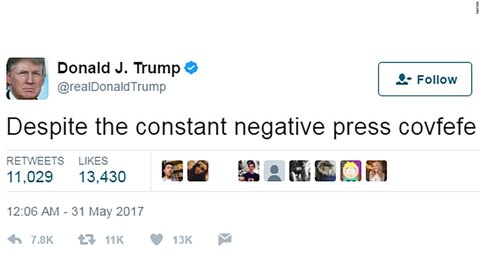Turning mishaps into opportunities. Some brands can pull it off brilliantly. But the risk of striking out looms.
Jobboom, the job listing website, capitalized on the laziness of a contracted worker who paved René-Lévesque Boulevard to launch a clever bit of advertising. Using a now-famous photo of the half-paved street, the brand added, “It’s obvious when you don’t like your job anymore.” The opportunistic ad quickly spread on social media, generating considerable buzz.
When it comes to clever advertising, the job search website is running neck and neck with its competitor Workopolis. Some of you will remember the “Welcome to Workopolis” stickers that appeared on the campaign posters of losing candidates after Montreal’s last municipal election.
In a similar vein, the travel magazine Condé Nast recently published a fictional travel guide for the newly discovered island of Covfefe. One of the many parodies that emerged after President Donald Trump posted this infamous tweet with a strange spelling mistake:

As consumers, we love this type of communication, because it’s entertaining and it allows brands to show their intelligence. As long as it respects good taste, of course. For brands, it’s an opportunity to demonstrate their more light-hearted side, to engage in the ad world’s version of banter.
For advertisers, this also presents an opportunity to step outside the rigid process of organizing, planning, testing, approving, watering down and then re-approving campaigns. When we can react to the news, in real time, the communications and the media they appear on become more ephemeral… but creatively speaking, it opens a whole new world. No wonder then that agencies seek out popular moments to generate new ideas for their clients!
This type of communication is often a golden opportunity for brands and their agencies. Brands have the chance to prove that they’re not so rigid and to create a sensation in the local community. Big brands can rarely produce a comprehensive campaign for such small markets, but making a reference to one local event can reinforce that brand’s relevance and engagement.
Be warned, however, that not all current events are appropriate fodder for reactive advertising. We have already seen the mis-steps of certain brands. From the #SandySale during the hurricane of the same name to the referencing of celebrity deaths (in this case, Prince), many campaigns have been torn to shreds for being perceived as purely opportunistic.

It’s not sadness or the seriousness of a subject that make it untouchable. Rather, it’s about the tone used. For example, Nike produced an ad to support Tiger Woods’ comeback after personal troubles pulled him from competition. In this touching video, we hear the voice of Earl Woods, Tiger’s father, dead for many years now, speaking: “I want to find out what your thinking was. I want to find out what your feelings are. And did you learn anything?” This show of humility by the golfer and his sponsor was indeed perceived as modesty, rather than self-interested promotion.
But how can advertisers draw a line between the two? How can they demonstrate their human side without being seen as greedy and opportunistic?
All will be lost if the consumer can see through the communication and spot the advertiser’s consumerist appetite. In many cases, it’s because the brand is too obviously concerned with the conversion into dollars. If a brand is not sensitive enough towards the cause or sad event, it’s best to take a step back. #PrayforParis, yes. #WePrayforParisPleaseBuyOurStuff, no.
If a brand is perceived as benefiting from the pain of others, it will be ripped apart online. Not forgetting, also, that brands will never be able to please everyone and that some people have very thin skin. The ultimate test for any brand, especially when it seeks to reference a sorrowful event, is to evaluate whether the communication will align with its values.
In other words, the brand manager must answer the question: Would I take this stand even if it compromises sales? This is a test of your authenticity—a value that is often talked about, yet too often ignored by brands.
This article was originally published online in French on L’actualité.
Image from Marketing Land


